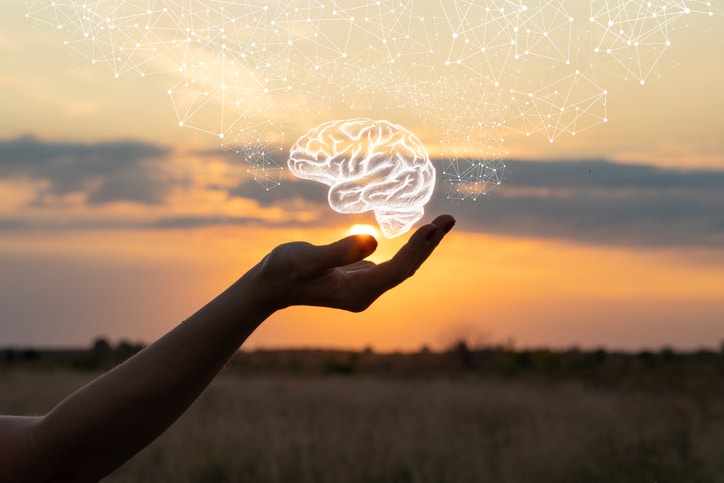By Melissa Chalos
When you hear the word “emotion,” what comes to mind? For some, the word has an instantly negative connotation as if it’s a bad thing to feel emotions at all. Some children are taught outright that showing any emotion — be it anger, sadness, fear or even happiness or pride — is a sign of weakness. But emotions have purpose in our lives. Our feelings are part of who we are, the filter by which we experience life at its fullest.
Emotionally healthy people have the ability to control and process emotion, to regulate emotions as they surface. But not everyone can do this.
… most people who suffer from developmental trauma that results in unregulated emotions like fear, shame, and rage, really struggle relationally.
When someone experiences trauma during childhood, one of the most common takeaways is difficulty in managing emotions. Trauma creates higher emotional arousal — the habitual firing of fear circuitry in the brain and central nervous system — that manifests in fear, shame and rage. Trauma victims are often missing the coping skills or capacity to process these feelings. Without the ability to regulate emotion, the trauma of childhood can continue to negatively impact the victim’s emotional well-being throughout the rest of his or her life.
At Meadows Behavioral Healthcare, we understand how developmental trauma impacts emotional health, and we’ve had tremendous success helping patients learn to regulate emotion using neurofeedback. This is tremendous news for those who suffer the long-term effects of childhood trauma.
What Is Neurofeedback?
Neurofeedback, or neurotherapy, is a type of therapy that monitors real-time displays of brain activity to teach self-regulation of brain function. It helps patients experiencing anxiety, depression, post-traumatic stress disorder (PTSD), and addictive and emotional disorders, among other mental health issues, better understand what is driving their emotions. It teaches them how to retrain and calm their brains to process emotion in healthier ways.
Dr. Sebern F. Fisher, author of Neurofeedback in the Treatment of Developmental Trauma: Calming the Fear-Driven Brain and consultant to The Meadows, explains that this treatment is “relational technology” that addresses the fear circuitry in the brain. “There is no other path,” he says. “We must reduce fear.”
This is critical because most people who suffer from developmental trauma that results in unregulated emotions like fear, shame, and rage, really struggle relationally. When they understand what is happening in their brain circuitry, they can learn how to self-regulate and build the capacity for healthy relationships. Using neurofeedback at The Meadows, therapists and patients look for effects from brain training and take the opportunity to identify and practice new relational behaviors.
Emotionally healthy people have the ability to control and process emotion, to regulate emotions as they surface. But not everyone can do this.
How Neurofeedback Works
Essentially, neurofeedback gives people who have experienced trauma a means by which to reconnect with the very part of themselves that has been most wounded. It invites them to learn more about how their brains work and get more comfortable with the experience of emotion — to become more okay with not always being okay.
You’ve heard the old adage that says, “to know where you’re going, you have to know where you’ve been.” For many people who have experienced trauma, that journey isn’t even possible because the trauma has resulted in a lost sense of self. Neurofeedback therapy makes it possible to identify and develop a point of self-reference, which makes it possible to work through the trauma and come out on the other side capable of regulating negative emotions.

More Therapies at the Brain Center
In addition to neurofeedback, the on-site Brain Centers at The Meadows and and each of our sister facilities offer different types of therapies aimed at quieting the fear-driven brain and, over time, changing it. These options include:
- Cranio-electro stimulation (CES), which is useful for sleep, anxiety, and improved cognitive functioning for those dealing with addiction or mental health issues
- Heart-Rate Variability (HRV) training, which helps patients learn to relax and develop coherent breathing patterns, helping with greater self-awareness of internal reactions
- Audio/Visual Stimulation (AVS) with CES, a technology that combines light and sound to reduce stress, insomnia, and mood disorders — and to increase memory and cognitive functioning
- Hemoencephalography biofeedback (HEG), a method of monitoring changes in frontal cerebral blood circulation and oxygenation
- The Chi Machine, technology that provides maximum oxygenation for the heart and improves the immune and lymphatic systems
- Somatic Experiencing® (SE), body-oriented exercises that help patients process trauma and other stress disorders
Emotional Healing Is Possible at The Meadows
With these and other treatments at The Meadows, people who have experienced childhood or adult traumas can begin the process of emotional healing. The brain, like the body, can re-learn and heal. For those dealing with substance abuse issues, this type of brain work can make treatment more effective. The brain can be retrained to regulate harmful emotions, which leads to healthier emotions and healthier behaviors.
If you or someone you love has experienced trauma and struggles to process or express negative emotions in a healthy way, please visit The Meadows to learn more about how to hit the reset button. Emotional health is worth it.

